“Faced with this striking landscape that could have inspired the "wall" of the series "Game of Thrones" and faced with this working class history that created the region with a strong Italian sounding, Karine Herman and Jérôme Sigwalt were inspired by an unheard of context.”
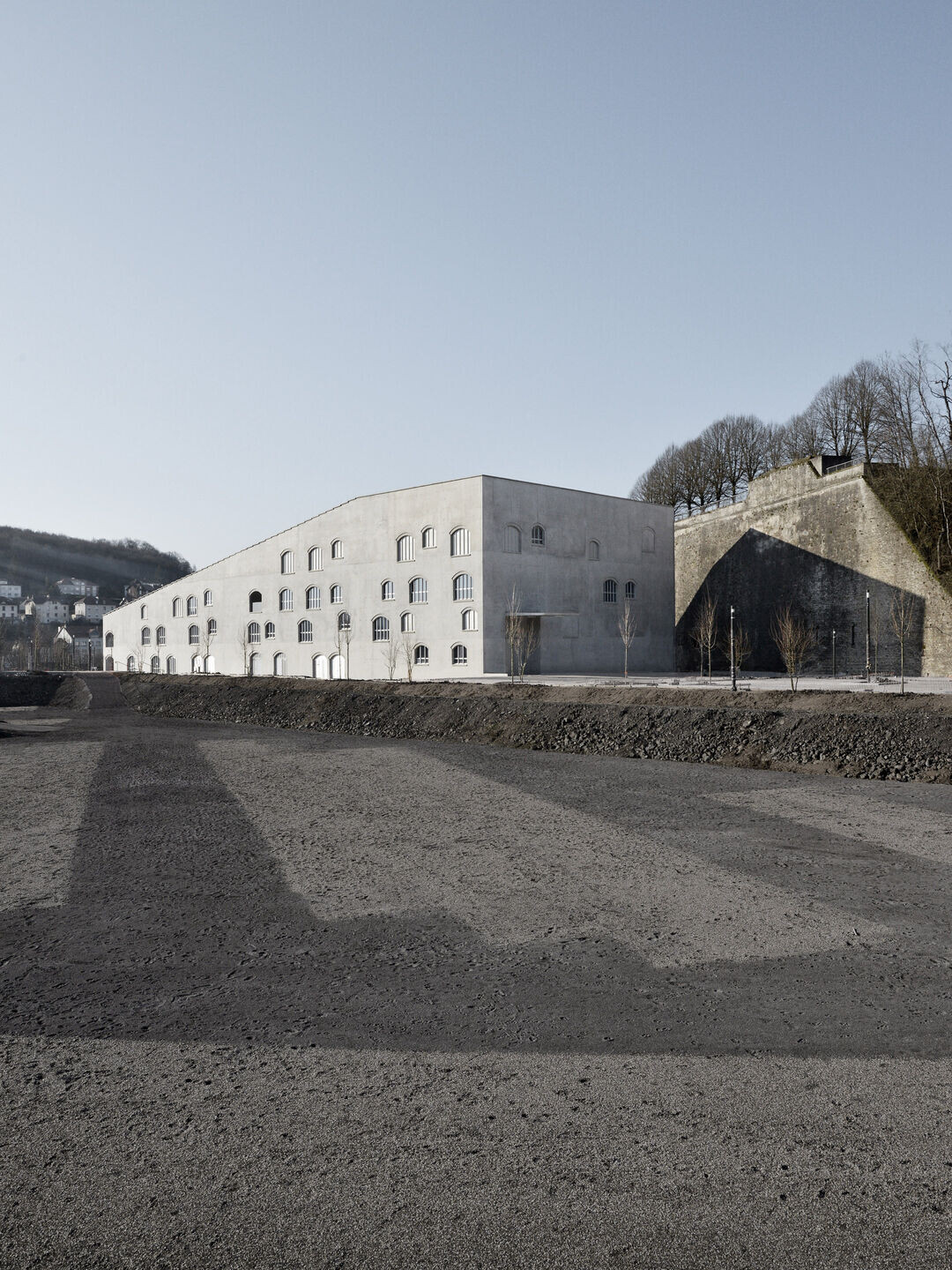
CONTEXT
Villerupt is a small town in Lorraine, built on the border with Luxembourg on a subsoil that was once full of iron ore. It followed the huge expansion of the exploitation of this resource, growing from 560 inhabitants in 1861 to over 16,000 a century later.
Many Italians will come to fill the tens of thousands of jobs needed to extract and process millions of tons of material. Four generations will follow one another until the resource was exhausted.
More than fifty years later, a large number of Villeruptians remain attached to their Italian roots and Villerupt organizes an annual Italian film festival of national scope. On the other hand, almost all industrial facilities have been dismantled, but the landscape retains many vestiges of this period. Giant retaining walls are the most spectacular. It is at the foot of one of them that the Arch is built.

ISSUES/ CHALLENGES
Villerupt is the center of a string of municipalities built in the Alzette valley. These neighbors, united by the same industrial history, are now all linked to the massive demand for labor called for by Luxembourg.
These municipalities have come together in a major joint project to clean up a vast industrial wasteland and build a new district with a future. Symbolically, the first building to be erected in this area was L'Arche, with the aim of obtaining the title of "European Capital of Culture" in partnership with its Luxembourg neighbor, Esch-sur-Alzette. The goal was reached in 2022 even before its final delivery.
L'Arche has been programmed as a hybrid cultural space where digital arts, creative industries and multiple artistic practices meet. It is a place of life and sharing where you can find a bar-restaurant, a cinema, a performance hall, a fablab and an immersive digital art gallery.
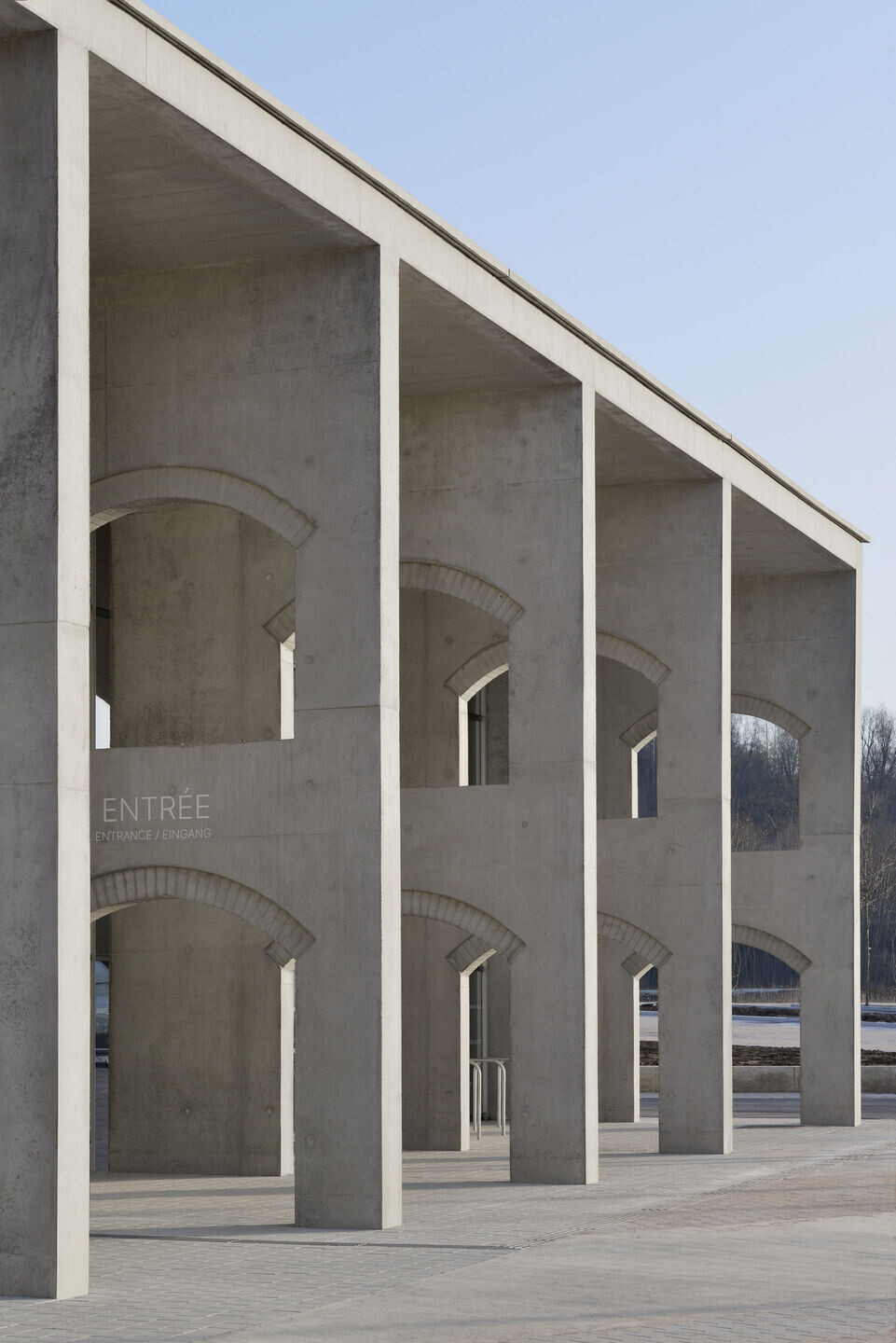
CONCEPT
The Arch is built at the foot of a monumental wall. This high and thick wall, built of stone, supported a technical platform on which the extracted ore was unloaded before being transported to the steel mills below. Faced with this striking landscape that could have inspired the "wall" of the series "Game of Thrones", faced with this working class history that has creolized the region with a strong Italian consonance, Karine Herman and Jérôme Sigwalt were inspired by an unprecedented context.
Their narrative architecture has invented a particularly singular, even endemic form. Its massive and mineral morphology responds with the same power to the disproportionate wall that borders it. His writing also refers to another gigantic retaining structure built not far away and which is honeycombed according to the principle of arcades. A timeless theme that is reminiscent of a similar support structure built in Italy some 2000 years ago, the Colosseum in Rome. It is also in Italy that the architects were inspired by an almost universal reference. It is a small building that was built in the last century in the wild and phantasmagorical creeks of the island of Capri. It is called the Casa Malaparte and this house is an icon of Italian rationalist architecture as it has become an architectural icon of the cinema since Brigitte Bardot and Michel Piccoli walked it in 1963 in Jean-Luc Godard's Le Mépris. The invention of this link with Villerupt seemed almost incongruous, but the architects dared and the Arch was indeed shaped to recall the singular shape of this house. Its massive volume, beveled on the fifth facade, is profiled in a monumental paved staircase that lets our eyes slide to the heights of the wall. Its high landing is designed as a belvedere and awaits the installation of a building combining architecture and digital art.
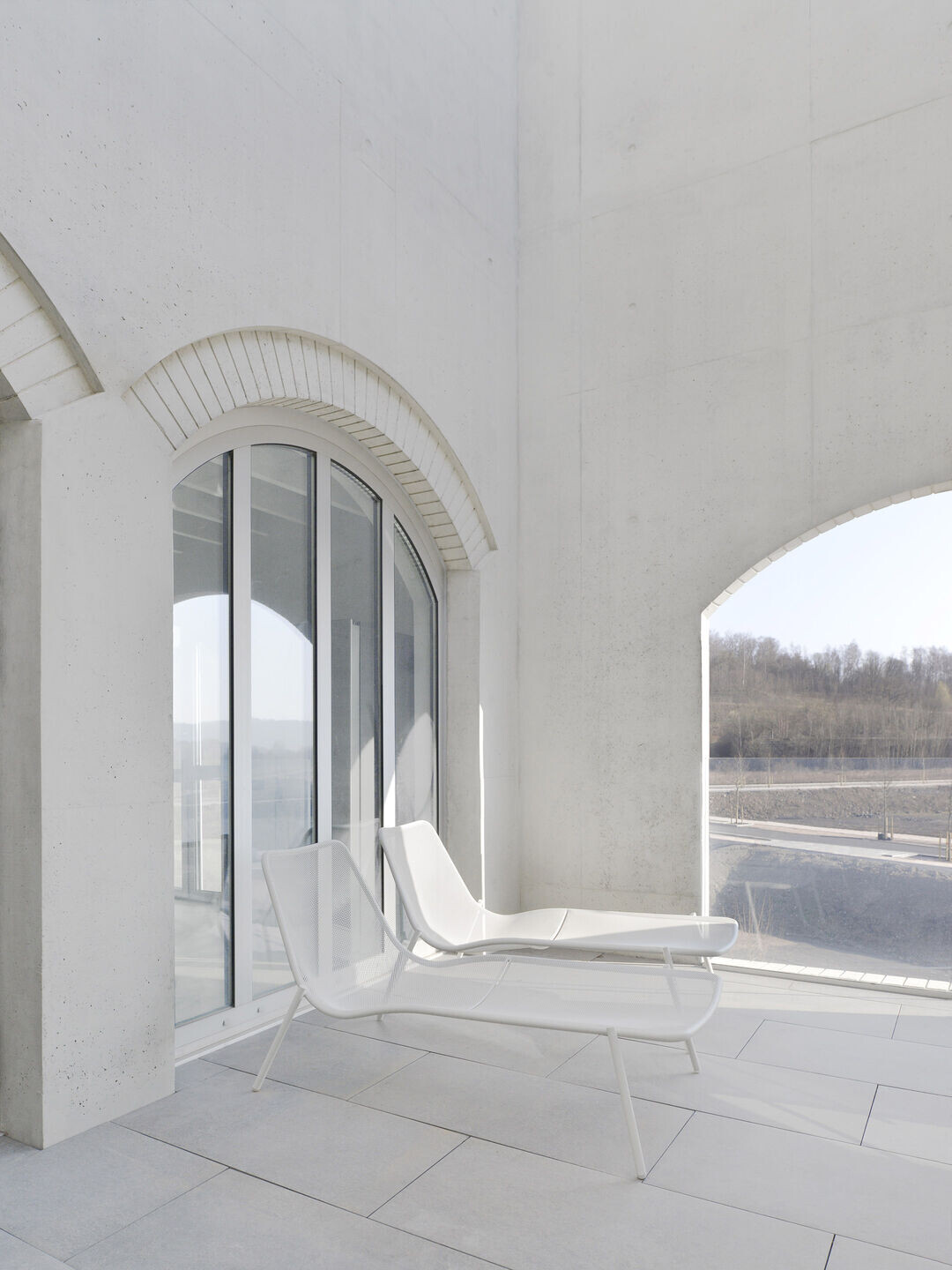
The massive building is slimmed down and opens generously in arcades into the Esplanade Nino Rota, named after the Italian composer who wrote many film scores, including the Godfather and Fellini's Casanova. The third place opens to the public by a hall animated by a bar-restaurant and a small ephemeral stage. This space is framed by interior facades that open up to other spaces, including the 147-seat cinema, the immersive gallery, the "fablab" and, above all, a vast auditorium with very ambitious capacities for adapting to a capacity of up to 1,140 people.
The interior architecture is deliberately written in the same contemporary minimalism. The large volume of the hall, bathed in natural light, welcomes the public in a convivial atmosphere punctuated by works imagined in the grandiloquent tradition of theatrical foyers. The staircase, which leads to the balcony of the main hall, is deported from the interior façade to be read in the space as a monumental work. The lighting is provided by chandeliers created specifically for the place. Two models, one concave and the other convex, are designed according to a technicality close to the structures used in scenography. Their frame is in raw steel and the assemblies are relatively low tech.
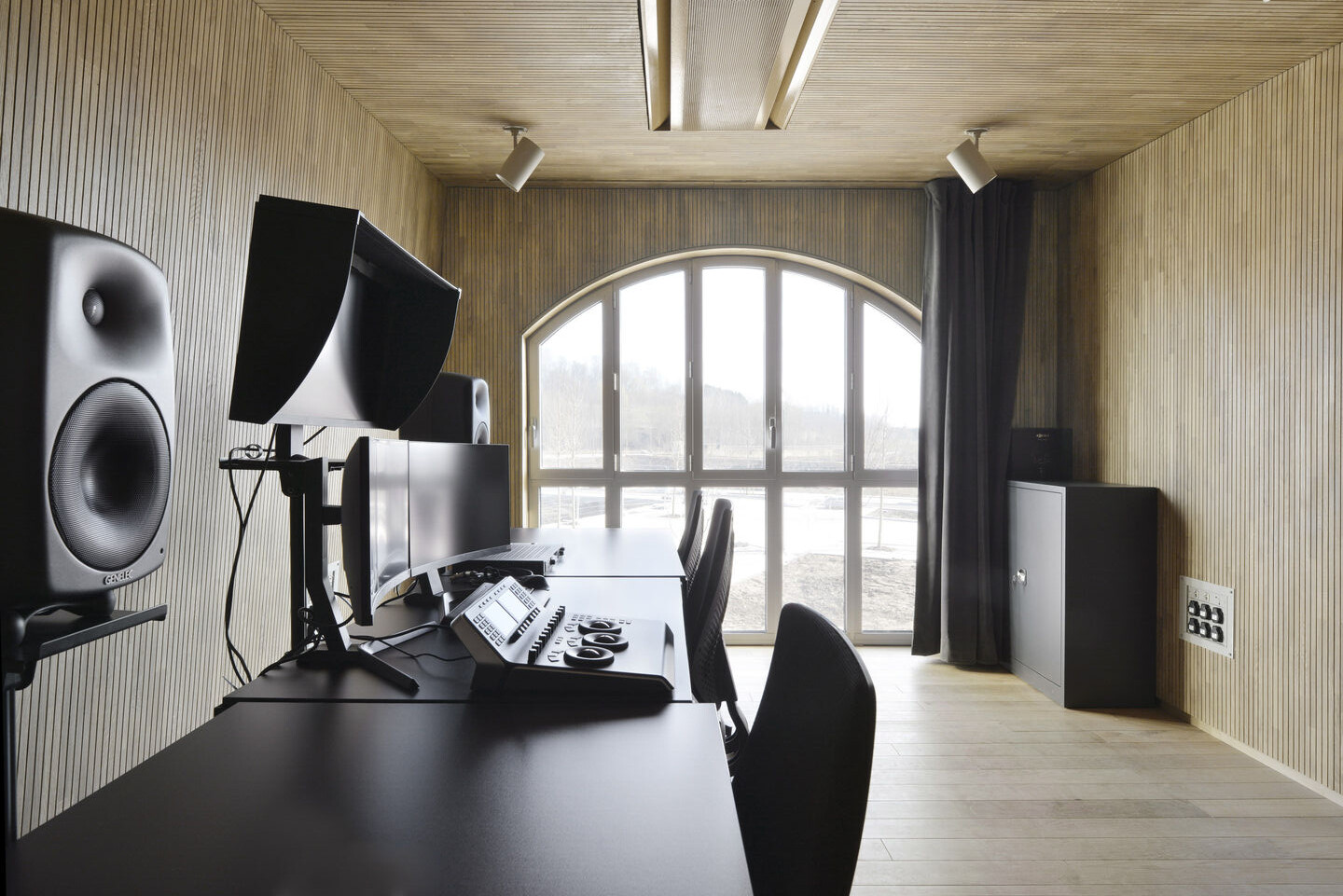
These structures are designed to support technical lighting fixtures along cone-shaped lines. The lamps are coated with show gelatin to color the light in the dominant tones of a Lorrain sunset. The colors in general are chosen in their faded tones or in the concrete greys. The rest of the spaces are whitened in a matt way, as if powdered with a white of Meudon. L'Arche is a unique building that nevertheless follows the theme of timelessness that its architects continue to explore in their creations. Because if minimalism remains their dominant trend, the authors use a malicious pleasure to never push their picturesque referents beyond the limits of abstraction. It is as if they refuse to let their works stand out in history. Not so that they don't have an age, but so that they have several ages. "Buildings of contemporary writing too often tell only of a simple disinterest in history.”
We are looking for the exact opposite" says Jérôme Sigwalt.
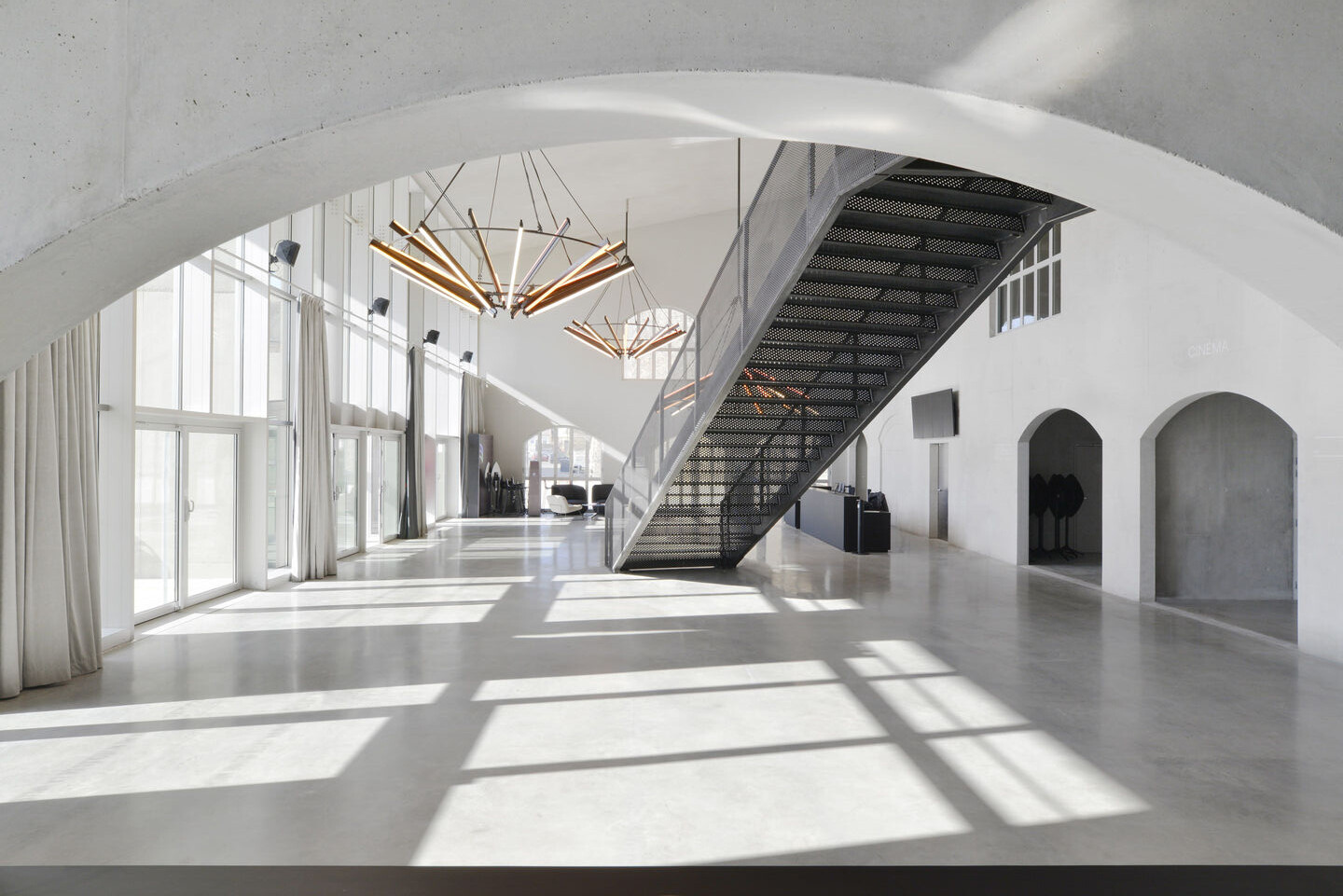
DATA SHEET :
PROJECT OWNER
COMMUNITY OF MUNICIPALITIES PAYS HAUT VAL D'ALZETTE
PROJECT MANAGEMENT TEAM
K ARCHITECTURES (Emilie Bourdier, project manager architect) avec, CHANGEMENT A VUE (scenographer), BATISERF (structure), ALTIA (acoustician), BMF (economist), AREA ETUDES NANTES (fluids), AREA CANOPEE (HQE), BURGEAP (decontamination), AIA MANAGEMENT (OPC)
PROGRAM
CULTURAL EQUIPMENT A HYBRID CULTURAL SPACE WHERE DIGITAL ARTS, CREATIVE INDUSTRIES AND MULTIPLE ARTISTIC PRACTICES MEET. A 147-SEAT CINEMA, AN AUDITORIUM WITH A CAPACITY OF 1140 SEATS (402 OF WHICH ARE SEATED) OR 688 SEATS, A BAR-RESTAURANT, A FABLAB AND AN IMMERSIVE DIGITAL ART GALLERY AND MUSIC STUDIOS.
BUDGET 11,9M€
SURFACES 3 272m2
MISE EN ŒUVRE CONCRETE, METAL CALENDAR 2016/2022
PHOTO CREDITS GUILLAUME AMAT





































